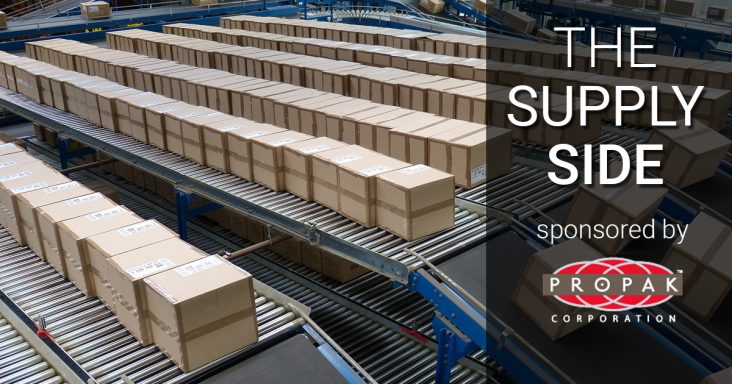The Supply Side: Consumer spending shifts driven by inflation, end of stimulus funds
by June 16, 2022 2:08 pm 1,151 views

According to a survey by management and analytics firm Tango, with consumer spending expected to rebound after two years of pandemic disruptions, inflation threatens to inhibit the critical consumer impact on the economy.
The survey found that consumers go back to the physical store more often and that 81% of consumers want to continue shopping in-store and online with either pick-up or home delivery options.
An underlying driver for where consumers shop is low prices. Tango found that consumers are concerned about rising costs, and 68% said where they shop has changed during the past few months due to inflation and higher fuel prices.
According to the Tango survey, those with a household income of at least $75,000 are more likely than those with lower household incomes to say where they shop has changed over the past few months because of inflation.
While Walmart recently reported harsh first-quarter results from higher expenses and a massive inventory overrun, Dollar Tree and Dollar General, often seen as the lowest entry point for consumables, fared better. Dollar Tree and Dollar General boosted their outlook for the year as shoppers squeezed by inflation seek lower prices. The companies see people buying a different merchandise mix than they were a year ago when they had stimulus dollars in their pockets.
“We’re already seeing our core customers start to shop more intentionally,” Dollar General CEO Todd Vasos said on a call with analysts. “And we’re starting to see that next tier of customers start to shop with us a little more.”
Dollar Tree Executive Chair Rick Dreiling listed the many challenges consumers are facing, from the highest levels of inflation since the early 1980s to record-high gas prices and uncertainty from events such as the Russian invasion of Ukraine and the pandemic. He said many consumers “are living paycheck to paycheck.”
“In tough times, value retail can be part of the solution to help families stretch their dollars to meet their evolving needs,” Dreiling said.
A new report from McKinsey found that inflation has not stopped consumers from spending, but it has shifted how and where they spend. McKinsey said U.S. consumers had approximately $2.8 trillion more in savings than in 2019 to start 2022. Many didn’t hesitate to dip into those savings as pandemic restrictions eased across the country.
But it’s not just the savers spending. McKinsey reports that credit card debt is starting to rise. People of all ages and income groups spent more of their money in the first quarter of 2022. The biggest spenders were Millennials, whose spending was up 17%, followed closely by high-income consumers, whose purchases rose 16% from a year ago.
McKinsey notes that consumers continue to spend more on specific product categories, but inflation is slowing volume growth. In some categories, spending increased in February/March 2022 because people bought more, and inflation accounted for only a tiny portion of the change. That was especially true in categories that boomed during the pandemic, such as sporting apparel, pet supplies, cosmetics and electronics. But in other categories, including gasoline, restaurants and travel, inflation has masked a drop in consumption volume.
“To start 2022, consumers bought mostly goods rather than services or experiences. Spending on goods was higher than pre-pandemic levels. In contrast, spending on services was still 2% lower than pre-pandemic — a pattern that began changing in early March as more consumers spent on concert tickets, vacation plans and summer get-aways,” according to McKinsey.
Oliver Chen, a senior analyst at Cowen & Co., recently noted that consumers are going out again, which is good for the apparel and entertainment categories. He said the consumer is also at a crossroads as inflation and loss of stimulus are hurting lower-end households. He said consumers with household incomes below $50,000 are pulling out of the spending recovery. He expects other slightly-higher income households to follow if prices for food and fuel remain elevated.
More U.S. consumers also reported switching to different brands and retailers in 2022 than at any time since the beginning of the pandemic, and most of them say they intend to incorporate that behavior into their routines. McKinsey said the main reasons for the change include looking for the best value or lowest price, which has become a top motivation for switching amid runaway inflation.
McKinsey reports that 90% of respondents have noticed prices going up. In particular, they’ve seen significant price hikes in two things that many people buy multiple times a week: gasoline and groceries. Among consumers who said they’ve switched brands, slightly more than a third said they opted to purchase private-label brands chasing value and low prices.
The trend is expected to continue until inflation moderates later this year.
Editor’s note: The Supply Side section of Talk Business & Politics focuses on the companies, organizations, issues and individuals engaged in providing products and services to retailers. The Supply Side is managed by Talk Business & Politics and sponsored by Propak Logistics.
